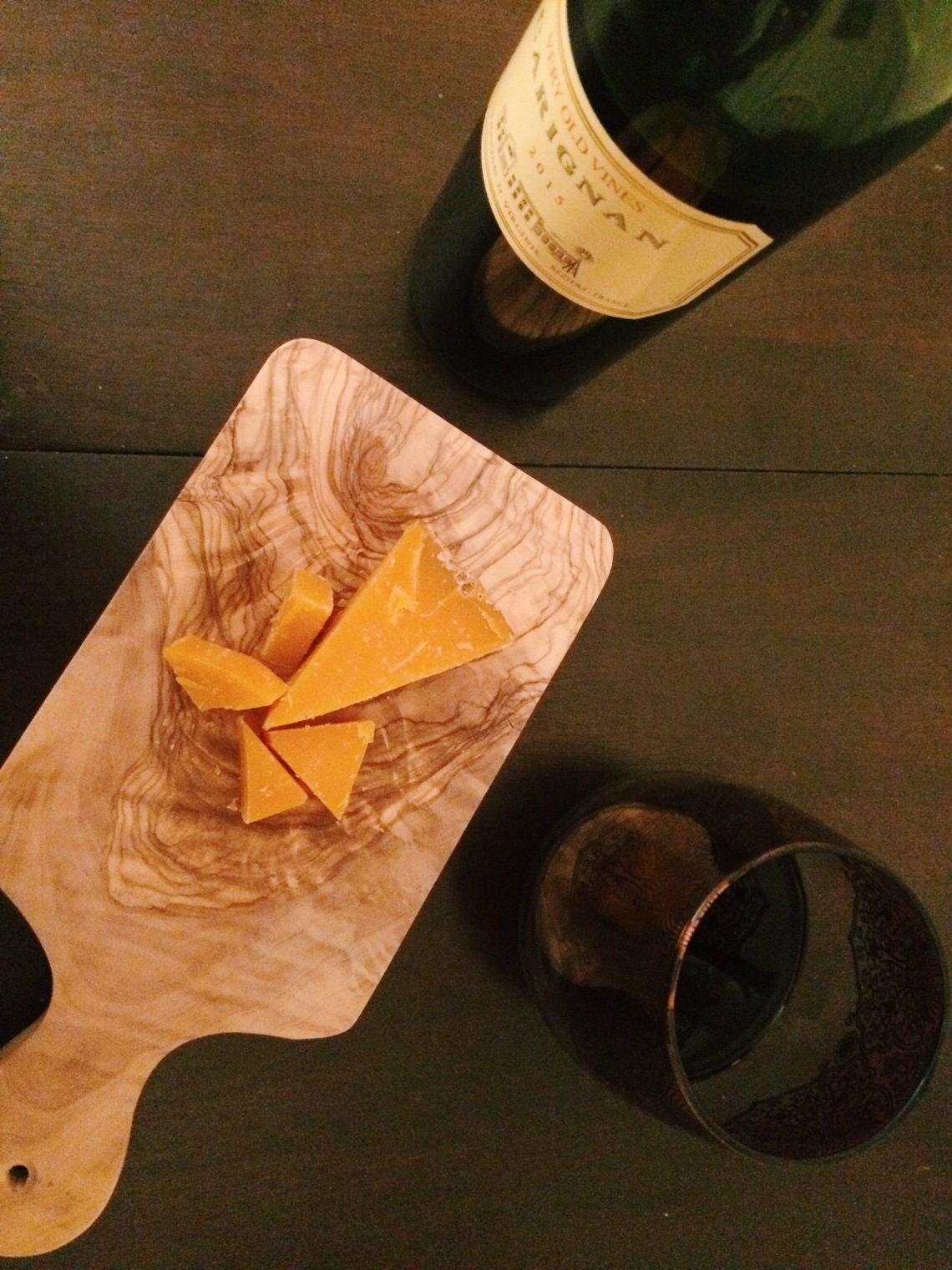Some Context:
*** Reader discretion is advised ***
This post features another one of those cheeses: the kind of cheese whose presence on the plate separates the strong-minded from the weak and the daring tasters from the timid. If, that is, they know the “how” behind Mimolette’s crater-like, coral-reef-looking shell.

Mimolette cheese has a highly distinguishable appearance thanks to a couple of characteristics. One is the bright orange glow of its paste. The orange hue does not come naturally to Mimolette. However, the color is created with a natural dye. Annatto is a food coloring derived from seeds of the achiote tree. Annatto has been used to give some cheeses, like Gloucester, their signature tangerine shade since the 16th century.
Mimolette’s second discerning feature is its rind. Bearing a beige hue, its texture is hard, rocky and volcanic. It’s so severe to the touch that legend has it that during the Hundred Year War, when the French ran out of cannonballs, they used wheels of Mimolette as replacements.

The French use another all-natural tactic to achieve this craggy exterior and here’s where it gets scary, folks. During the aging process, makers of Mimolette introduce mites to the cheese. The mites eat, dig and procreate for years until the affineur deems the cheese ready to eat. Don’t be so quick to dismiss Mimolette though! You probably don’t know (or maybe you do) that mites are everywhere, whether they are introduced or not – in our pillows and beds, our rice bags and pasta boxes! Once the aging process is complete, these little microscopic guys are removed with a blast of compressed air and some hand-brushing. This usually gets rid of most of them, but when it doesn’t, you can count on the FDA to halt the cheese from entering the U.S.

I’m sure you’re wondering why someone would adulterate a perfectly fine cheese in such a creepy, crawly way. There is of course a reason for it, and that reason is flavor. As these mites eat up mold and burrow in and around the cheese, they allow oxygen flow during the aging process. This gives the cheese some nuance, enabling a sweet, floral, earthy flavor to develop and leaves a mountainous, dusty shell behind as a sign that the mites have done their work. Mimolette just wouldn’t be the same without them!
Mimolette is a point of French pride. It is their take on the beloved Dutch cheese, Edam. A favorite of former President Charles De Gaulle, Mimolette is created in Lille and is made with raw cow’s milk.
Procuring and Tasting:
You won’t find Mimolette as easily as, say, Gruyère or Gouda, but most extensive cheese departments will offer it.
Mimolette has a granular, dry texture. Its taste is salty, first and foremost, with a little nuttiness to it. Definitely don’t eat the rind on this one, not that I think anyone would be tempted to. While mites are a good thing for facilitating complexity in a cheese, where they leave their pronounced mark (in the rind), they also leave their signature (and unpleasant) ammoniated taste.
Cooking with Mimolette:
Per the suggestion of Max McCalman’s Cheese and Wine app, I bought a French wine called Carignan to pair with my Mimolette. The wine was great – dry, berry-ful, light-weight – and left absolutely no coating or aftertaste in my mouth. Paired together, Carignan brought out herbal notes in the Mimolette and gave it an overall sweeter taste.

I tried to cook a cauliflower gratin topped with Mimolette and Gruyère but it didn’t turn out very well. It had a nice flavor, but consistency-wise, it was very, very soupy and definitely not photogenic. I followed this recipe here which, based on my experience, calls for a little too much milk.


You are right! I might be a little faint hearted to try this one. But you are a gutsy one! Thanks for sharing (I think).
LikeLike